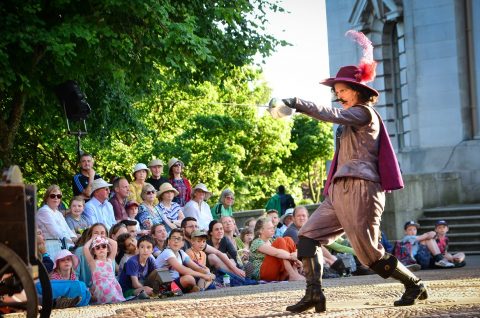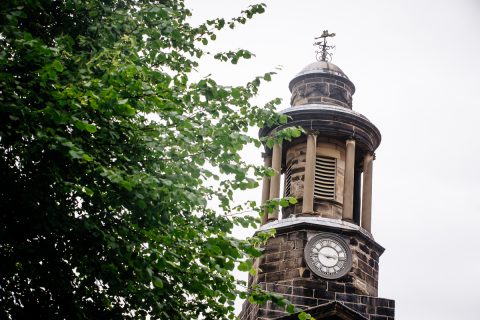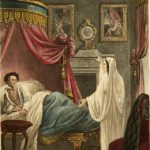The White Lady

Sitting high on the hilltop in the tranquil church yard of Lancaster Priory sits a mid-19th century white marble tomb upon a sandstone plinth; shrouded in mystery.
Upon the now slightly dilapidated but once-grand tomb chest reclines the effigy of a young woman in a long, flowing gown. Unfortunately, there has been significant damage to the statue, and she is now ‘headless (the head is in the Priory).
While the tomb is very much admired by visitors who come to visit the Castle and Priory, there is a local fondness for the tomb and the mysterious stories that are attached to the woman who lies peacefully upon the stone, yet restlessly below it.
The inscription on the tomb is worn and now, sadly, illegible. It is believed to be the resting (though she is not at rest) place of a young woman, Ann Rothwell. Ann was the first wife of William Talbot Rothwell. Merchant of Liverpool and Foxholes, Ellel; but to many locals, she is better known as ‘The White Lady’.
A ‘White Lady’ or ‘Lady in White’ is generally a female ghost, dressed (as the name suggests) all in white and associated with stories and legends of loss, betrayal, unrequited love or tragedy.
According to local legend, Ann fell to her death from the Priory church bell tower when she attempted to turn back the clock to delay time and save her lover (not her husband) from execution at the Castle. There were several prisoners executed between 1840 and 1870, so we aren’t able to currently connect her with any of them.
Poor Ann can now be seen roaming the churchyard at dusk and dawn.
There have been many variations to the tale, such as she was pushed, jumped or accidentally fell onto the metal fencing below. Many locals say that there is now a metal bar missing from the railings – believing it had been removed after Ann had fallen onto it.
Some variations say that she was trying to save her husband and others say it was her father who was set to face the gallows. Either way, she left a Last Will and Testament, so could there have been foul play?
There are many different versions of the tale, including that poor Ann was actually attempting to clean the clock when she fell (unlikely)!
There have also been sightings of a ghostly white face looking down from the top of the bell tower. After an unsuccessful fundraising bid to reattach the head in 2015, Ann remains headless, but still impressive.
We do not know exactly her cause of death, but according to research, there was a lady called Ann Rothwell née Carter, who did tragically die at the age of 35 in 1842 at nearby Foxholes. There was also a William Talbot Rothwell who resided at Foxholes around that time who was said to be her husband. According to the 1851 census, he later remarried a woman named Elizabeth, who had a daughter named Anne Carter Leisetta – likely named after his lost love, Ann (née) Carter – an interesting twist to our tale!
After some myth busting however it was found that there has never been any evidence to state that William Talbot Rothwell ever faced a possible execution, though his father, William Snr endured a short sentence at the Lancaster Castle for larceny – but was never sentenced to death. Therefore, it is unlikely that she was attempting to change the clock for her husband who was to be executed. The family was also very wealthy, as shown by this grand tomb, so it seems unlikely that Ann would have gone to clean the clock herself. Until further documentation comes to light, we will never know the true story of what happened to the ‘White Lady’ and why such a story developed.
The White Lady’s mysterious legacy will continue to live on – but if you see her, would you ask what she’s so sad about, so we can put the rumours to rest.






















